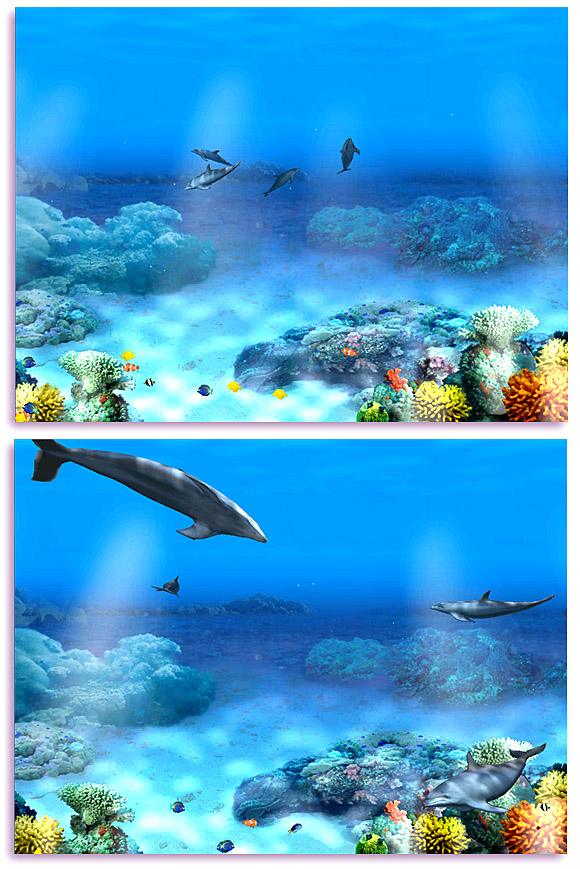

You can also select the entire group, which allows you to move and resize the shapes and photo at the same time. If you want to continue resizing or positioning the photo, you can select its layer, and then use the Move Tool. This makes our photo a child layer to the shapes layer, so the photo will only be visible where the shapes are. To do this, click and drag the photo’s layer down and to the right of the shapes layer. Now we’re going to put the photo inside of our shapes, by making it a child layer. Once you’ve selected the photo, just click and drag to place it. To place a photo in the document, go to File, then Place.

Now that we’ve rasterized our shape group, we can place an image inside of it. To rasterize the group, right click on the group layer, and then press Rasterize. Be warned though, because this will take away your ability to edit the individual shapes, so really make sure you have them all in the right spot. Then we are going to rasterize this group. Hold down shift to select all of the triangle layers, and then press Command G (Mac) or Control G (PC) to group them. Once you’re fully satisfied with how your shapes are looking, we’re going to group them in the Layers Panel. I’m going to continue this process to make a few more triangles. You can hold down Shift to keep your rotation in 15 degree increments, which makes it a lot easier to rotate it exactly 180 degrees. I’ll also rotate it 180 degrees by clicking and dragging on the circle above the triangle. With our new triangle, I’m going to resize and position it with the Move Tool. Have the triangle layer selected, and then press Command J (Mac) or Control J (PC) to duplicate the layer. To add more triangles, I’m going to duplicate the one we already have. Then we can use the Move Tool to reposition our triangle to the center. But personally, it helps me to see the triangle better if I change its color to something different than the background color. It doesn’t really matter what color is it though, since it’s going to be covered up by our photo anyways. If you want, you can change the color of your triangle in the Color Panel. Then we just need to change the Sides to 3 in the Context Toolbar. And if you hold down Shift while dragging out the shape, you can keep its width and height equal. Now we just need to click and drag to make a shape. I like the way equilateral triangles look better, so I’m going to stick with the Polygon Tool. To get the Polygon Tool, press and hold on the Rectangle Tool, and then select Polygon.Īs a side note, we’re using the Polygon Tool instead of the Triangle Tool, because the Polygon Tool can make equilateral triangles, while the Triangle Tool makes isosceles triangles. To make triangles, I’m going to use the Polygon Tool. I’m going to use triangles for this design, but you can use any shapes you want. If you want to learn more about gradients, we cover them in greater depth in the Color chapter of our beginner’s guide to Affinity Photo.įor the next part of the project, we will make some shapes that we can place our photo inside of. Now let’s select the color in the middle of our gradient, and make it a slightly lighter shade of grey than the other colors. Now let’s give the left side of our gradient the same color. Just press on the color stop to select it, and then in the Color Panel, change the color. Let’s start with the color stop on the right side. Now we’re going to change the colors of each one of our color stops.

To add another color to the gradient, just press on the gradient line. We’re going to use three colors in our gradient. And if you hold down Shift, you can keep your gradient in a straight line across the document. We’ll make the gradient go all the way across our rectangle. To give our rectangle a more interesting color, let’s use the Gradient Tool to make a gradient. To do this, select the Rectangle Tool, and then click and drag to make a rectangle going across the document. Now we’re going to make the background for our wallpaper. Now we can start our document, so press OK at the bottom of the Dialog Box. Since my screen is 2880 x 1800, I will change the Page Width and Page Height to match that. If you are using this design for your computer, a quick Google search for your screen dimensions will tell you what size you need. Then, change the Page Preset to your device. If you’re going to use this design as a wallpaper for your iPad or other handheld devices, you can change the type to Devices. The first thing we need to do is create a new document.
RELAX PHOTO DESKTOP REVOLUTION HOW TO
Ready to get rid of that generic wallpaper on your computer? In this Affinity Photo tutorial, we’ll learn how to create customizable wallpaper that you can be proud of.įor this tutorial, we’ll be using this beautiful portrait, but feel free to use any of your own images to create this wallpaper effect.


 0 kommentar(er)
0 kommentar(er)
